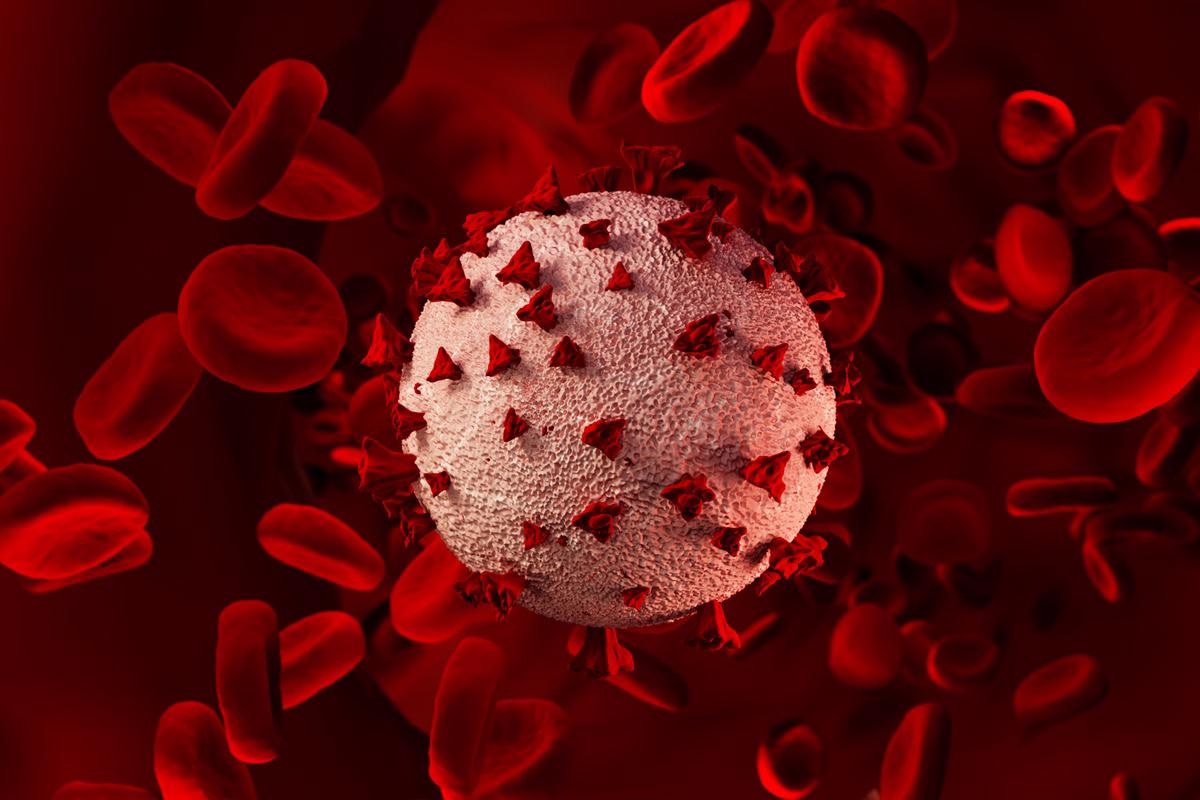In a recent prospective study posted to the medRxiv* preprint server, researchers evaluated the kinetics of severe acute respiratory syndrome coronavirus-2 (SARS-CoV-2) viremia.

Coronavirus disease 2019 (COVID-19) caused by SARS-CoV-2 typically manifests with mild symptoms but in some cases may develop into severe disease and prove fatal. It is critical to identify patients who might develop severe disease and improve their management.
Elevated interleukin (IL)-6 levels are some of the poor prognosis factors helpful in the risk stratification of COVID-19 patients.
The reverse transcription-polymerase chain reaction (RT-PCR) that detects the viral ribonucleic acid (RNA) remains the gold standard for diagnosing COVID-19. Nonetheless, there is no relationship between viral load in nasopharyngeal swabs and the clinical severity of the disease.
The study
In the current study, researchers analyzed the viremia kinetics in COVID-19 patients using quantitative and qualitative RT-PCR methods. The research was carried out at Hospital Universitario de La Princesa in Madrid, Spain, between November 2020 and January 2021. Around 57 RT-PCR-confirmed COVID-19 patients were longitudinally followed.
Besides sociodemographic variables, the authors obtained clinical characteristics and outcome data such as intensive care unit (ICU) requirement and death during hospitalization. A poor (clinical) outcome was associated with one of the earlier (ICU or mortality) factors. Additionally, they collected data on hospital admission, symptoms, and death. Blood samples were obtained 24 – 36 hours after hospital admission and subsequently at 48 – 72 hours during the first week and two times a week until discharge.
Two RT-PCR tests qualitatively processed all specimens – TaqPath™COVID-19 CE IVD RT-PCR Kit and Cobas®SARS-CoV-2 Test; QuantStudio™ 5 Real-Time PCR System (qTaqPath test) was used for quantitative analysis.
Findings
There were four samples (median) collected per patient, and the median age of the participants was 64 years. Males represented around 61% of the cohort. Eight patients (14%) were admitted to the ICU during hospitalization, and five patients (9%) had a fatal outcome. There were 10 patients with poor outcomes with a median age of 60.5 years.
The researchers investigated 298 serum and 300 plasma samples. The two qualitative RT-PCR tests produced concordant results, and both the Cobas and TaqPath tests showed higher positive detection in plasma samples with statistical significance. Viral load was quantified for 41 serum and 50 plasma samples with the qTaqPath test. The median viral load for plasma samples was 462.88 copies/ml and 370 copies/ml for serum specimens. The differences between the two sample types were not statistically significant.
The two qualitative (RT-PCR) tests could detect three targets – N, S, and ORF genes – in 64.3% of patients and at least two targets in 79% of cases. The researchers observed three different patterns of viremia – a) persistent viremia (PV) in which viremia was observed in two or more consecutive tests, b) sporadic viremia (SV), detectable viremia in isolated samples, and c) negative viremia, implying no viremia during the hospital stay. There were 16 (28%) patients with PV, 34 (60%) with SV, and seven (12%) with NV. PV persisted for a short period with a median time of five days for plasma samples and 4.5 days for serum specimens.
Viremia clearance was spontaneous during hospitalization in the case of PV. Among those with PV, nine patients had an initially high viral load that declined subsequently; six patients showed decreasing viral loads. The deceased patient had increasing levels of viral load until death. All patients with a poor outcome during hospitalization presented PV, while none with SV or NV had a poor outcome. Viral load was lower in patients showing SV compared to those with PV. SV patients had median viral loads of 77.3 copies/ml in plasma and 59.4 copies/ml in serum. PV patients had considerably higher viral loads – 558 copies/ml in plasma and 370.4 copies/ml in serum.
Conclusion
The authors noted that patients with a poor outcome, i.e., ICU admission or death, showed PV, while SV or NV was not associated with poor outcomes. These findings indicated that patients with PV are more likely to have a poor clinical outcome upon hospitalization.
Both quantitative and qualitative RT-PCR methods demonstrated similar patterns of viremia kinetics. Notably, higher positive test results were obtained in plasma specimens than serum samples. Hence, the researchers suggested using viral load results from plasma specimens for viremia analysis. In conclusion, PV might indicate a potentially poor prognosis in COVID-19 patients, and as such, both qualitative and quantitative RT-PCR methods are suitable for determining SARS-CoV-2 viremia.
*Important notice
medRxiv publishes preliminary scientific reports that are not peer-reviewed and, therefore, should not be regarded as conclusive, guide clinical practice/health-related behavior, or treated as established information.
- Nelly Daniela Zurita-Cruz, Alexandra Martín-Ramírez, Diego Aníbal Rodríguez-Serrano, Isidoro González-Álvaro, Emilia Roy-Vallejo, Rafael De la Cámara, Leticia Fontán García-Rodrigo, Laura Cardeñoso Domingo. (2022). Usefulness of real-time RT-PCR to understand the kinetics of SARS-CoV-2 in blood: a prospective study. medRxiv. doi: https://doi.org/10.1101/2022.03.07.22271764 https://www.medrxiv.org/content/10.1101/2022.03.07.22271764v1
Posted in: Medical Science News | Medical Research News | Disease/Infection News
Tags: Blood, Coronavirus, Coronavirus Disease COVID-19, covid-19, Genes, Hospital, Intensive Care, Interleukin, IVD, Mortality, Nasopharyngeal, Polymerase, Polymerase Chain Reaction, Quantitative Analysis, Research, Respiratory, Ribonucleic Acid, RNA, SARS, SARS-CoV-2, Severe Acute Respiratory, Severe Acute Respiratory Syndrome, Syndrome, Transcription

Written by
Tarun Sai Lomte
Tarun is a writer based in Hyderabad, India. He has a Master’s degree in Biotechnology from the University of Hyderabad and is enthusiastic about scientific research. He enjoys reading research papers and literature reviews and is passionate about writing.
Source: Read Full Article